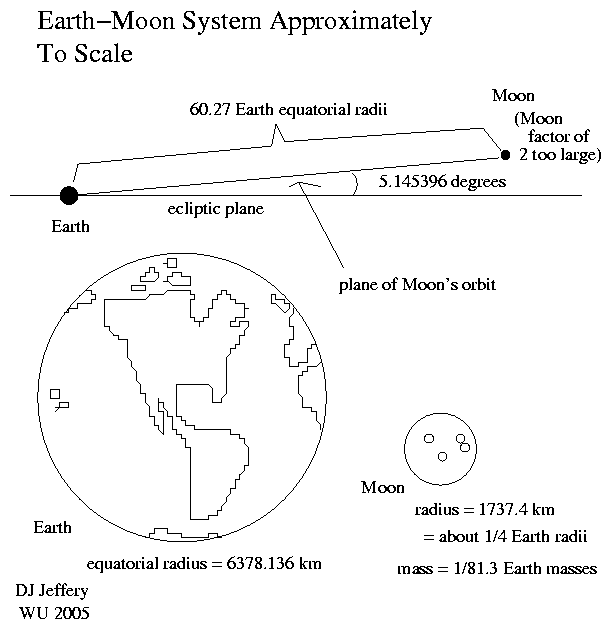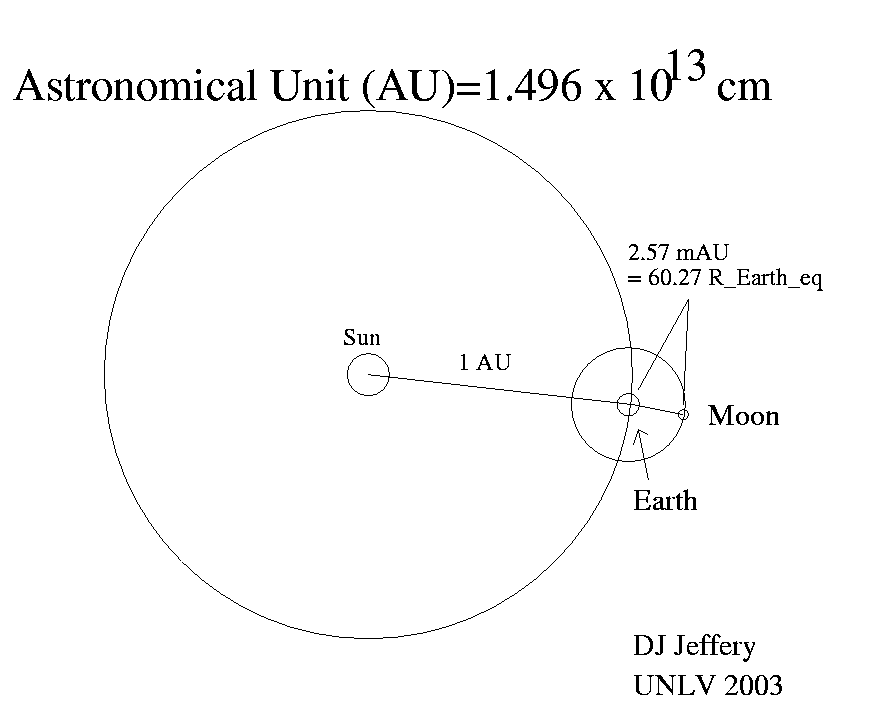
Image 1 Caption:
2-body
Earth-Moon system,
approximately to-scale.
Features:
- As illustrated in the Image 1, one can see that
Earth
and Moon
are both pretty small compared to their separation distance.
- Now the
Earth equatorial radius R_eq_⊕ = 6378.1370 km
and
R_Moon = 60.2684 R_eq_⊕ = 2.57*10**(-3) AU = 384,399 km ≅ 400,000 km .The number to remember is R_Moon ≅ 60 Earth radii.-
Note that distances between
astronomical objects
are usually
center-to-center distances
if there are well defined centers.
If there are NOT well defined centers,
then more specifications are needed about what distance means.
- Note the
Moon's elliptical orbit
eccentricity = 0.0549006
which means the
Moon's
distance varies by about 11 % from
perigee
to apogee.
- Image 2 Caption: The 3-body system Sun-Earth-Moon, not-to-scale.
 The image shows the
Earth's orbit
and the Moon's orbit,
and compares
Earth-Moon distance
to the astronomical unit (AU) 1.49597870700*10**8 km,
but NOT-to-scale.
The image shows the
Earth's orbit
and the Moon's orbit,
and compares
Earth-Moon distance
to the astronomical unit (AU) 1.49597870700*10**8 km,
but NOT-to-scale.
To be precise, the Moon mean orbital radius R_Mo = 384,748 km = 1.28338 light-seconds = 2.57188 mAU = 60.3229 R_eq_⊕ ≅ 60 R_eq_⊕ (center-to-center), where the light-second = 299792.458 km (exactly), the astronomical unit (AU) = 1.49597870.700*10**8 km (exactly) , and the Earth equatorial radius R_eq_⊕ = 6378.1370 km.
- Image 2 Caption: The 3-body system Sun-Earth-Moon, not-to-scale.
-
Images:
- Credit/Permission: ©
David Jeffery,
2005 / Own work.
Image link: Itself.
- Credit/Permission: ©
David Jeffery,
2003 / Own work.
Image link: Itself.
File: Moon diagram file: earth_moon_system.html.